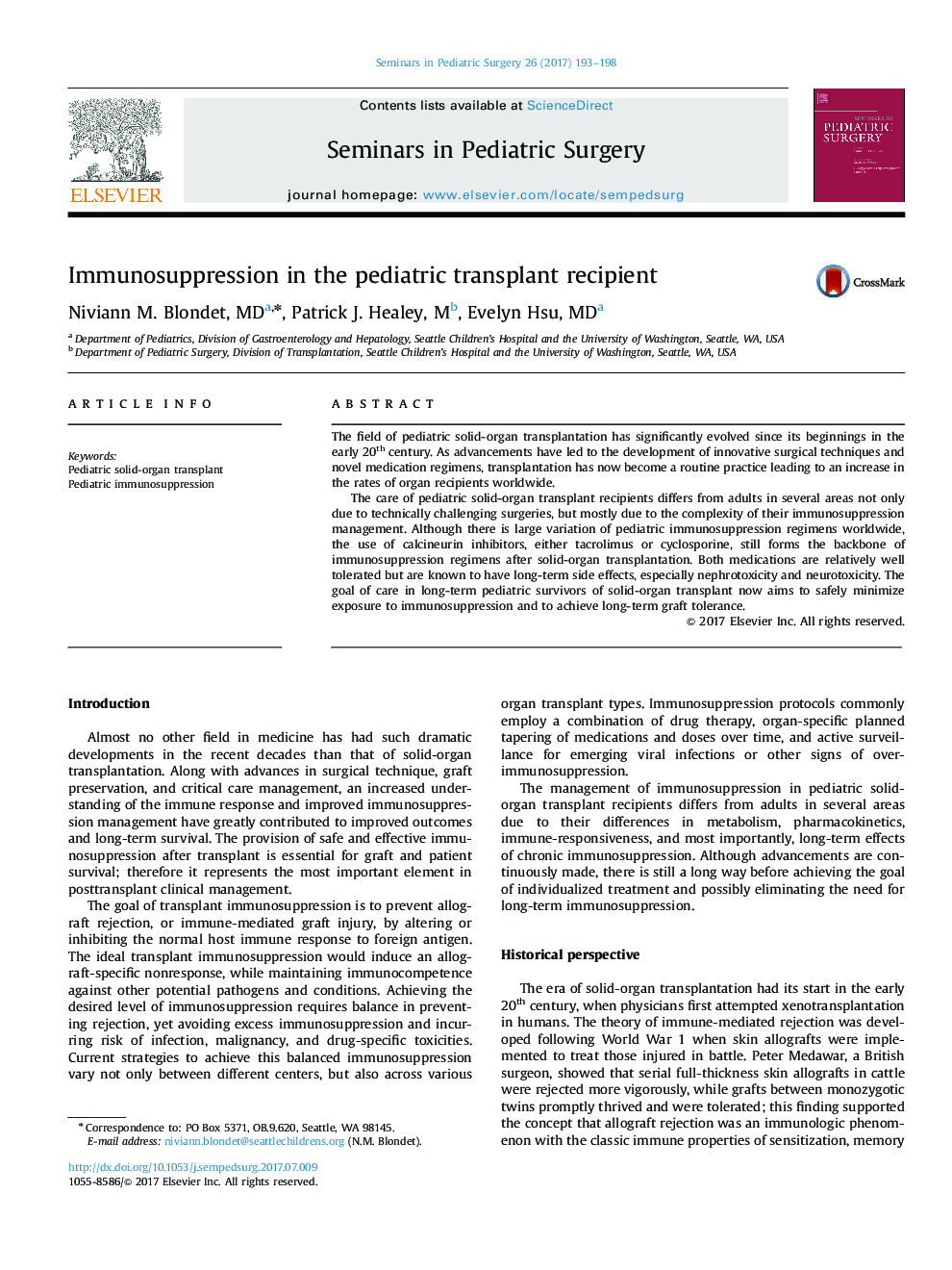| Article ID | Journal | Published Year | Pages | File Type |
|---|---|---|---|---|
| 5720280 | Seminars in Pediatric Surgery | 2017 | 6 Pages |
The field of pediatric solid-organ transplantation has significantly evolved since its beginnings in the early 20th century. As advancements have led to the development of innovative surgical techniques and novel medication regimens, transplantation has now become a routine practice leading to an increase in the rates of organ recipients worldwide.The care of pediatric solid-organ transplant recipients differs from adults in several areas not only due to technically challenging surgeries, but mostly due to the complexity of their immunosuppression management. Although there is large variation of pediatric immunosuppression regimens worldwide, the use of calcineurin inhibitors, either tacrolimus or cyclosporine, still forms the backbone of immunosuppression regimens after solid-organ transplantation. Both medications are relatively well tolerated but are known to have long-term side effects, especially nephrotoxicity and neurotoxicity. The goal of care in long-term pediatric survivors of solid-organ transplant now aims to safely minimize exposure to immunosuppression and to achieve long-term graft tolerance.
